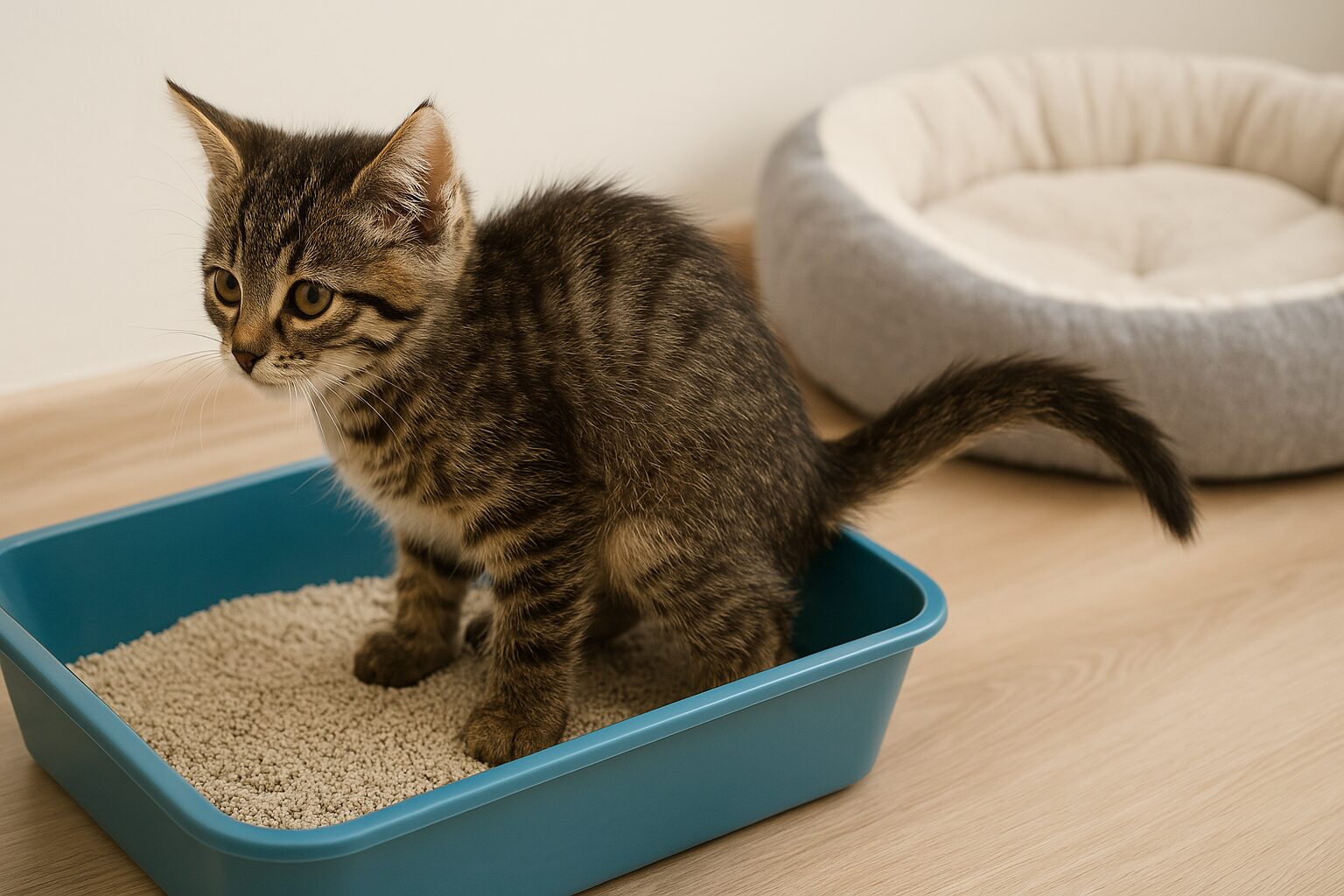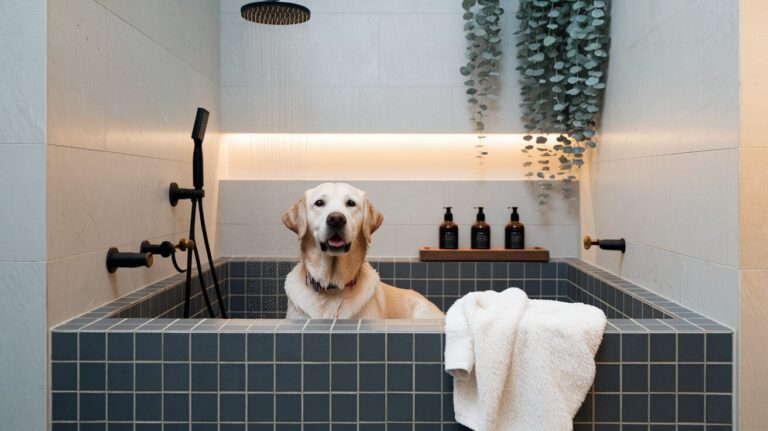Litter Training a Kitten: Quick & Easy Tips for Success
(Common Mistakes + DIY Litter Box Hacks for Small Spaces)
Bringing home a kitten? It’s honestly one of the best feelings ever. Those tiny paws, wide eyes, and nonstop zoomies are just the beginning of a love story. But let’s get real—along with the snuggles comes the very necessary task of litter training.
The good news? It’s easier than it sounds. Most kittens already have the instinct to use a litter box, but they still need a little nudge, especially in a new environment. I’ve raised and litter-trained more kittens than I can count—including in small city apartments where space (and carpet!) was a challenge. And I promise—you’ve got this.
In this guide, I’m sharing everything that’s worked for me: the basics, common missteps to avoid, and some space-saving DIY hacks that helped me raise clean, confident kittens in even the tiniest homes.
When Did I Start Litter Training My Kitten?
Most kittens are ready to learn around 3 to 4 weeks old. If your new kitten is 8 weeks or older (as most shelter and breeder adoptions are), they’ve likely had a head start.
Still, a new home can be a big adjustment. Different smells, routines, even flooring—and all of that can throw a kitten off. That’s why I always start litter training immediately, the moment we walk through the door. It sets expectations and helps your kitten settle in faster.
My Step-by-Step Method for Litter Training a Kitten
After many trial-and-error moments (and a few carpet stains), here’s the simple system I swear by:
1. Pick the Right Box
- I go for a small, open-top litter box with low sides that are easy to step into.
- Hooded or deep boxes can overwhelm a little kitten.
2. Choose Safe, Kitten-Friendly Litter
- For tiny kittens, non-clumping, unscented litter is a must (they sometimes nibble).
- I like starting with recycled paper pellets or pine—they’re gentle and low-dust.
3. Location, Location, Location
- I place the litter box in a quiet spot like a bathroom corner or tucked-away area.
- Not too close to their food and water—kittens prefer a little privacy.
4. Introduce Them Early
- As soon as we get home, I place the kitten in the box so they can sniff around.
- I repeat this after every meal, nap, and play session—it’s their natural potty timing.
5. Celebrate the Wins
- I always praise or offer a tiny treat after they use the box.
- If there’s an accident, I clean it up calmly and reset. No scolding—just redirection.
My Go-To Cleaner: I use enzyme-based sprays like Nature’s Miracle. They break down odors and prevent repeat accidents.
The Mistakes I’ve Made (So You Don’t Have To)
Let’s be honest, litter training isn’t always perfect at first. Here’s what tripped me up—and how I fixed it:
1. Putting the Box in the Wrong Place
- My first mistake was placing it in a noisy hallway. My kitten hated it.
- I moved it to a calm, quiet corner and she used it right away.
2. Using Litter That Felt Weird
- Some kittens are picky. One of mine refused clay litter but loved paper pellets.
3. Making It Hard to Reach
- A high-sided box or awkward placement can make it tough for them to get in.
- Keep it low, flat, and easy to access.
4. Too Few Boxes
- If I had multiple kittens, I learned to follow the golden rule: one box per cat, plus one.
5. Over-cleaning (or Not Enough)
- I once scrubbed the box with bleach—bad idea. My kitten stopped using it.
- Now I scoop daily and wash it with warm water and mild soap every couple of weeks.
What If Your Kitten Won’t Use the Litter Box?
First off, don’t panic. It happens. Let’s troubleshoot together:
Step 1: Check for Health Issues
- Sudden litter box avoidance could be a sign of a UTI or tummy trouble. Your vet can help rule this out.
Step 2: Look for Stress Triggers
- Big changes, new pets, or loud environments can throw them off.
- I found soft music and a cozy blanket nearby helped calm my anxious kitten.
Step 3: Try a New Setup
- Don’t be afraid to switch litter types or box styles. What works for one kitten might not work for another.
- Once, I swapped a covered box for an open tray, and my foster kitten used it immediately.
DIY Litter Box Hacks That Saved My Tiny Apartment
Need to save space and style? I’ve tried it all. Here are my favorite litter box hacks for small living:
1. Storage Bin Turned Litter Box
- I cut a side entrance in a plastic bin and tucked it behind my bathroom door. Total lifesaver.
2. Furniture That Doubles as Litter Box Storage
- An IKEA cabinet with a hole cut in the side made the perfect hidden litter zone.
3. Folding Screens for Privacy
- I used a cheap 3-panel screen to block off the litter corner. Bonus: it looked cute, too!
4. Natural Mats
- A jute or bamboo mat outside the box helped reduce litter scatter—and matched my decor.
5. Fresh Smell, Small Space
- I sprinkled a little baking soda in the litter and kept a mini air purifier nearby.
Living in a Small Space? Here’s What Worked for Me
My old studio apartment didn’t offer much room—but that didn’t stop my kitten from thriving. Here’s how:
Be Consistent
- I kept the box in one spot and didn’t move it. That predictability helped her feel safe.
Think Vertical
- Adding wall shelves and window hammocks gave her places to explore without taking up floor space.
Smart Placement Ideas
- In a closet (with the door cracked)
- Under the sink with a privacy curtain
- Tucked behind the couch with a mat and screen
Just make sure your kitten can always access the box easily.
Kitten Litter Training FAQs (Answered by Experience!)
How long does litter training take?
In my experience, most kittens figure it out in just a few days to a week.
Can older kittens be trained too?
Yes, absolutely. I’ve litter-trained kittens up to 6 months old. It just takes a bit more patience.
Should I use a covered box?
Start uncovered. Once your kitten’s confident, you can experiment with a cover if you like.
How often should I clean the box?
Scoop daily, change the litter weekly, and give the box a proper wash every 1–2 weeks.
What litter is best for kittens?
Stick to non-clumping, unscented, and soft-textured litters. I love paper pellets for starters.
Final Thoughts
Litter training can feel like a big hurdle, but honestly, it becomes second nature fast. With a little patience and the right setup, your kitten will be a litter pro in no time.
Keep it calm. Keep it consistent. And celebrate the little wins.
You’ve got this—and your kitten’s going to thrive with your love and guidance.
📌 Pin this post so it’s handy when you need a refresher—or to help out a fellow cat parent!


